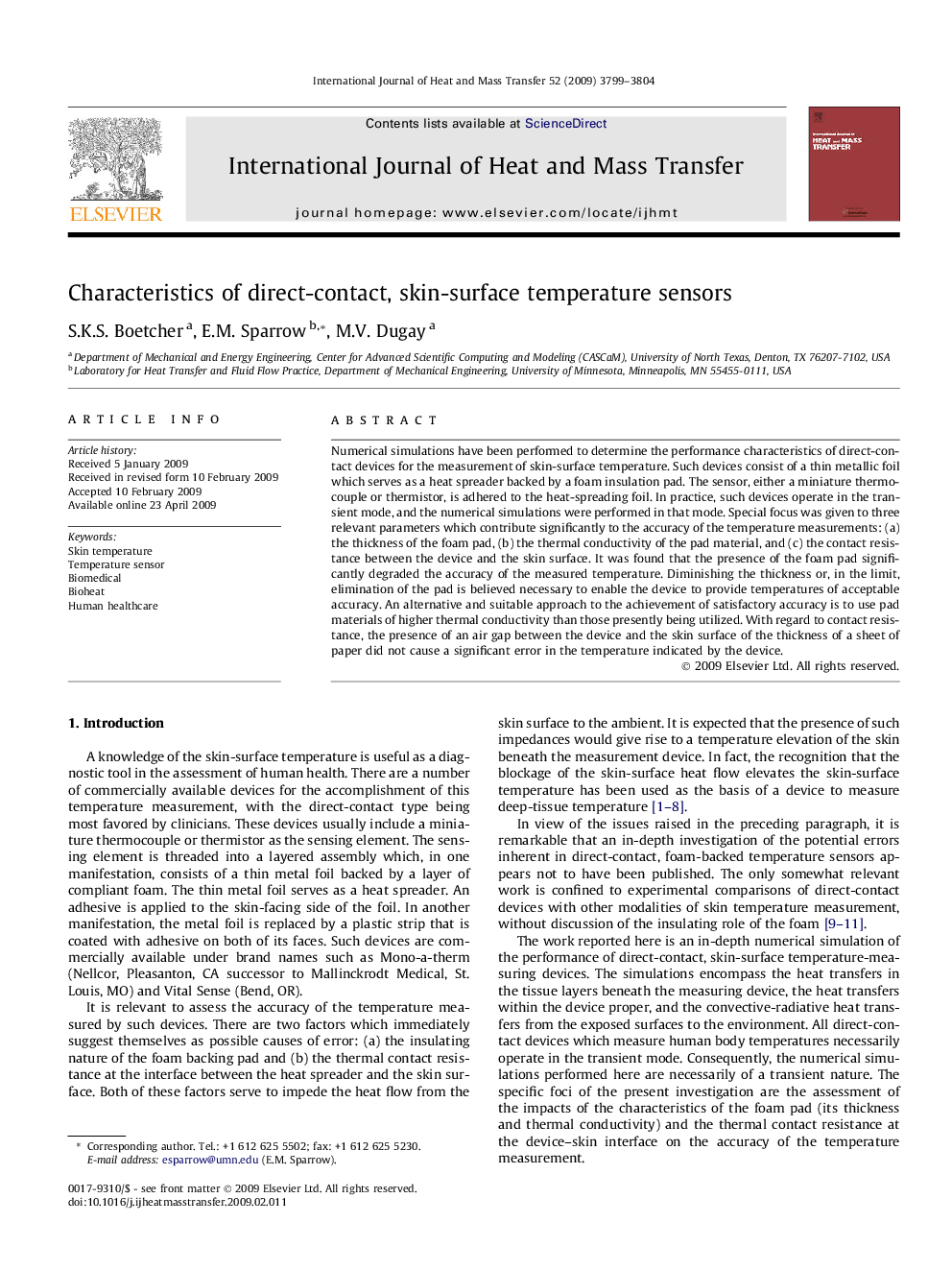| Article ID | Journal | Published Year | Pages | File Type |
|---|---|---|---|---|
| 659665 | International Journal of Heat and Mass Transfer | 2009 | 6 Pages |
Numerical simulations have been performed to determine the performance characteristics of direct-contact devices for the measurement of skin-surface temperature. Such devices consist of a thin metallic foil which serves as a heat spreader backed by a foam insulation pad. The sensor, either a miniature thermocouple or thermistor, is adhered to the heat-spreading foil. In practice, such devices operate in the transient mode, and the numerical simulations were performed in that mode. Special focus was given to three relevant parameters which contribute significantly to the accuracy of the temperature measurements: (a) the thickness of the foam pad, (b) the thermal conductivity of the pad material, and (c) the contact resistance between the device and the skin surface. It was found that the presence of the foam pad significantly degraded the accuracy of the measured temperature. Diminishing the thickness or, in the limit, elimination of the pad is believed necessary to enable the device to provide temperatures of acceptable accuracy. An alternative and suitable approach to the achievement of satisfactory accuracy is to use pad materials of higher thermal conductivity than those presently being utilized. With regard to contact resistance, the presence of an air gap between the device and the skin surface of the thickness of a sheet of paper did not cause a significant error in the temperature indicated by the device.
